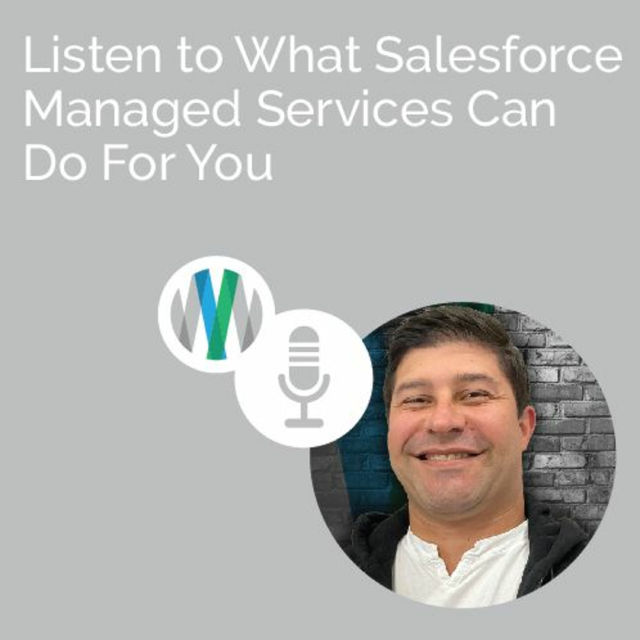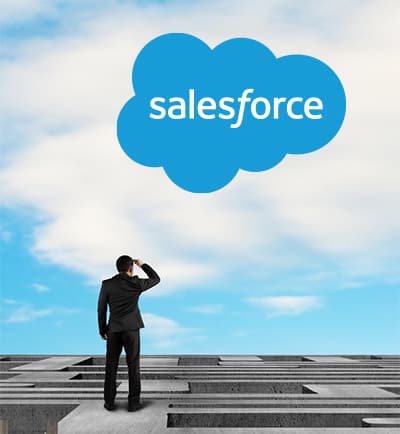Mike Boyle:
We have a Managed Services program here at Ad Vic. It’s called Thrive Managed Services, which you oversee. How do you and your team go about handling the transition to Managed Services from an implementation that we perform for a client, which forms a bond, a partnership going forward? Talk a little bit about that.
Joel Cajigas:
I think that’s one of the things that we do best, plugging in while the project itself is still, that implementation is underway. Oftentimes we have the opportunity to insert some of the folks from our team who will be taking over into some of the design aspects or the validation side of the implementation. And so it allows us to bring forth that knowledge from what’s happening during the implementation and understand what are the things that we still have to tackle next. We participate actively in those backlogs so that when our team takes over, it’s more of a seamless transition into just keeping the work going. We’ll focus a lot on the more immediate items and then we’ll take a step back and then do some of that roadmap planning as needed.
Mike Boyle:
What are some of the services that Thrive Managed Services typically provides clients?
Joel Cajigas:
If I had to break our services into three kinds of buckets, I would say that there’s the technical side of it and that includes our expertise and knowledge in the Salesforce® products, new releases that might be coming and what impacts those might have, the integrations that are necessary. And this is just the technical nuance. Then we have the deliverability services, which is how we establish priority and have an intake process for things that come up new, and where should those slides so that we can pick them up with the least amount of disruptions to the work that exists. We establish release cycles to have some of that predictability in our process. And then lastly, I would say the last bucket is more strategic and this is roadmap sessions and aligning with stakeholders on the goals that our customers have, establishing best practices, whether it’s with tools or the actual industry, and then looking and exploring for the new features that give us the most bang for our buck. So there’s the actual delivery of the work, the technical work itself. And then lastly, how do we settle on what we should be working on?
Mike Boyle:
Let’s pretend for a moment, Joel, that I own Mike’s Widget Company. How do you make me and my company feel like we’re a part of the Managed Services experience?
Joel Cajigas:
Well, Mike, I think the first thing we would look to engage is understanding, do you have any immediate needs that require attention? Oftentimes when people engage us, they have some very immediate needs that need solving. “An admin left,” or, “We don’t know what we’re doing,” or, “We’re running into these errors,” or, “We don’t feel that we have adoption.” Whatever those immediate pieces are, that’s where we would start. So, “Hey, from your widgets perspective, do you have any immediate needs?” And once we’ve established a plan to address those, then we’ll sit down and have these baseline value sessions where we’re looking to identify, what does value look like for Mike’s Widget Company? And once we understand what those value streams are, then we start planning and that’s where we get strategic and we prioritize, what are we supposed to do? And then along the way, we’ll be working with you guys to establish a release cycle that makes sense for you.
Joel Cajigas:
There might be some activities that are overkill and you don’t need, or you might require more in-depth, maybe additional grooming sessions built into the process. So we’ll be working with you guys to establish that while obviously, first and foremost, addressing immediate needs. Because that is valuable, so let’s make sure we knock those out.
Mike Boyle:
Well, you at the MSP and me at the widget company, we’re also thinking about what’s going on or going to be coming at us from down the road. How do you go about supporting the growth of my widget company?
Joel Cajigas:
Again, this is where those strategic conversations come into play, where we’ll sit down and understand that, “Hey, you find yourself at this particular point in time where,” for example, “… you need to get the word out that Mike’s Widget Company exists and we are the best at the widgets that we make. Well, if that’s where the value is right now, our focus with you will be on maybe some more marketing-centric activities on how do we get your name out there? How do we get you that exposure? What are the options? How do we make you realize that presence that you’re looking for, so now you can bring that attention in?” And then once we know that the attention’s coming in, we would circle back and say, “Okay, great. We’re anticipating this much more work coming in, then how do we respond to it? Do we have to have some more efficiency built into the process? Do you need better funnels to capture and weed out all the real opportunities from the leads that may be coming in?”
And so it’s all part of driving towards the value that we’ve established. That’s why they’re so critical to the conversation. And usually why when we are considered support, it sells us and our customer short. Because if what you’re looking for is someone to call when the lights go out, well, then, we can help with some of that, but you’re missing out on let’s plan for next.
Mike Boyle:
Unfortunately, Joel, in any business, there are disruptions. Unfortunately, there can be security events. How do we respond to client business disruptions or security things that pop up?
Joel Cajigas:
Well, from our perspective, we believe very clearly in doing our due diligence to prevent disruptions. So from a proactive perspective, when we’re working on our releases, there’s a very important built in time to do validation. So we don’t break things on the way out. That said, we do releases and we’ll have a hyper-support period where we’re proactively engaged to make sure that what was released landed in the production environment and it wasn’t disruptive. So that’s the proactive side. Reactive, I will say, we operate primarily on the Salesforce platform, which is fairly reliable. So there’s really not a lot of unplanned outages, although they may occur. And in some cases we can’t do anything to stand things back up, but we will engage with our customers to make sure that if there was a platform-level disruption that’s outside of our control, we understand the implications. And if there are records that weren’t processed or things that failed to move forward during that period of time that we have a plan to catch back up as soon as we possibly can.
Mike Boyle:
I want to give you the opportunity, Joel, to pound your chest a little bit, alright? What do you say sets our Thrive Managed Services apart from other MSPs?
Joel Cajigas:
I think what I’m really proud of is our personal approach. Our team is incredible. They’re probably the number one thing that sets us apart. We’ve got great people, who’ve been doing this for some time now and they understand what it takes. But beyond that, our practice is built on three driving concepts and they are traceability, predictability and do no harm. Traceability is making sure that all the activities we do can be mapped back to some form of a value strain. So if I’m doing something it should be adding or contributing to value. And if it’s not, then we should all stop and ask why we’re doing this. The second one with predictability is where those release cycles and calendars come into play. It’s a lot easier for all of us to be prepared and move things forward when we all know what to expect and when to expect it.
And that creates the right cadence and allows the work to continue, almost like a production line. You don’t want those disruptions. And then do no harm… we firmly believe that if we are making changes, we need to leave things better than they were before we got in there. So that means that we have to validate and we have to make sure that we are not creating issues. We’re not in the business of creating drama for our customers. And I do want to say that over the last, I’d say, the last 6 months, I think we do about 40 releases a month. We’ve had to roll back maybe two features in that time that were things that we introduced and they were minor tweaks and we got them back out. So, we don’t normally create disruption on that side.
Mike Boyle:
Lastly, anything else that you want to make sure people know about Thrive or Managed Services programs, in general?
Joel Cajigas:
I will say that it’s still an emerging type of service compared to the professional services side. And one of the things that we’re all trying to balance as MSPs is how do we find the right engagement levels. Because not every customer needs the same kind of service. And so we’ve been working on, at least on our side, in creating a number of different column experience tiers where, “Hey, we can serve the customers who are just looking for someone to call when something isn’t quite working,” all the way up to who wants to be driving and maximizing what they can get out of the tools that they have. But finding that experience level might take some calibration. And sometimes we think, “Well, I think I can work at this kind of experience level,” and then once we start engaging, we find out that, “Hey, we need to scale it up or scale it down,” or, “We’re right where we need to be.” And that’s part of the calibrating effect of having an MSP.
And so we find that’s one of the, I call it, a feeling-out process where in sales cycles, we land on what we all think makes sense. And then as we start getting into the work, we tend to calibrate. And we’re built in a way where we can absorb and support that.
Mike Boyle:
He is Joel Cajigas and Joel is Ad Victoriam Solutions’ Managed Services Director. And, Joel, I want to thank you so much for joining us today. I know I have walked away feeling like I have a much deeper understanding of Managed Services programs, in general. I’m sure the audience does as well. Thank you, again. Really appreciate you being here.
Joel Cajigas:
Well, thank you for having me. I can talk about this all day. So if you ever want to talk about it again or further, just let me know.
Mike Boyle:
You’ll be the first person that I get in touch with. I promise you that. Thanks, Joel.
Joel Cajigas:
Thanks, Mike.
Mike Boyle:
And for the audience, if you would like to learn more about today’s topic, I’m going to be placing a whole bunch of links in this show’s episode notes to help you along. And if this happens to be the first time you’re listening to our podcast, hey, thanks a lot. I really appreciate it. We want to make sure that you also invite your friends and family and anybody else who’s interested in this kind of topic, anything Salesforce-related to subscribe to the podcast. We’re on every podcast channel. And if you happen to be on Apple and you are inclined, I would really appreciate a five-star review for the podcast. Why? Well, it helps us, in the end, get out the word about the podcast. Thank you for considering that. I’m Mike Boyle from Ad Victoriam Solutions. Thank you for joining us for our latest Salesforce Simplified podcast. And as always, our next episode is just around the corner.
Speaker 1:
You’ve been listening to Salesforce Simplified the podcast from Ad Victoriam Solutions.


